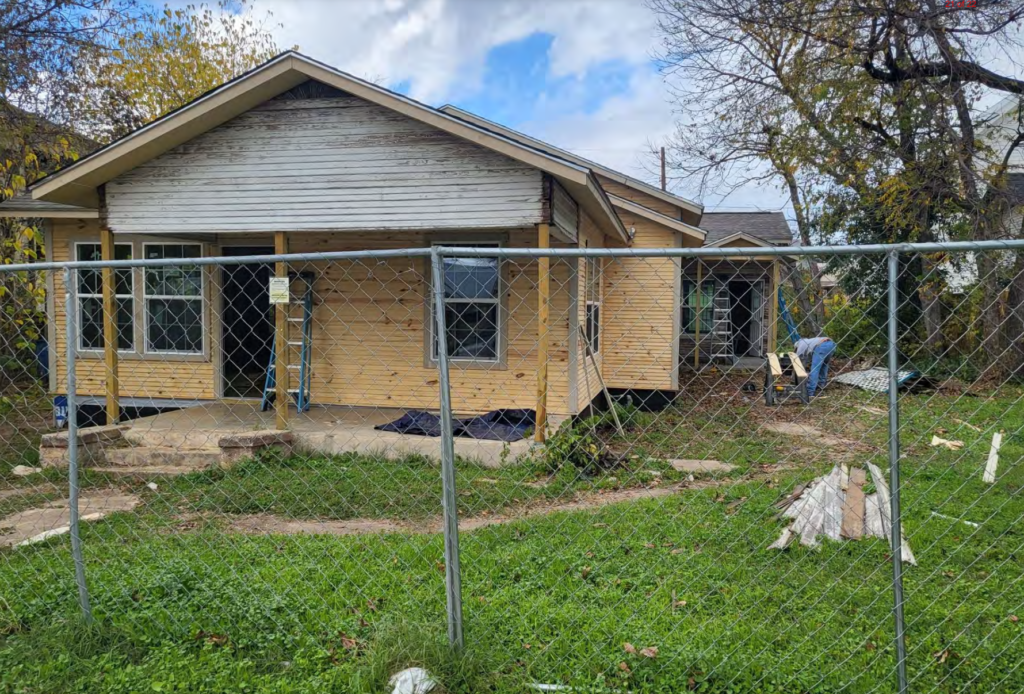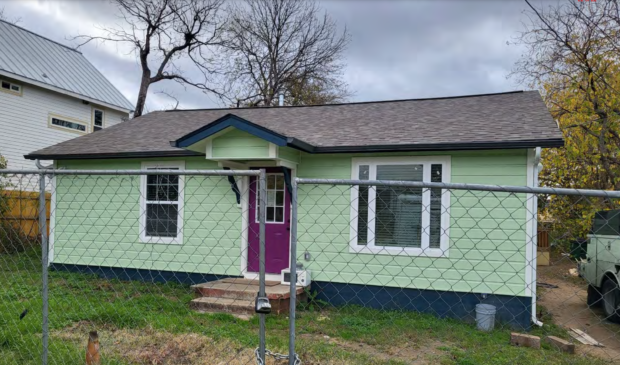Photo by city of Austin. 1209 Bob Harrison St.
Planning Commission backs historic zoning for east side beauty shop
Friday, May 17, 2024 by
Elizabeth Pagano Despite its recent history, the Planning Commission unanimously endorsed historic landmark status for East Austin’s Fashionette Beauty Shop as a step toward more equitable historic preservation this week.
The Fashionette Beauty Shop and McDonald Jackson House have stood at East 13th and Bob Harrison streets since the early 1900s. Staff and the Historic Landmark Commission both recommend historic zoning because of the building’s architecture, historical associations and community value. The city history of the homes highlights the beauty shop as a “significant reminder of the resilience, creativity and business acumen of African American women entrepreneurs in segregation-era Austin.”
Belinda Davis, who is a part owner of the home, spoke in favor of its preservation at the meeting. She said she was currently trying to renovate the house to restore it to the way she remembered it as a little girl. Though the house was passed down to Davis, she has not lived in Texas since 1976 and only recently moved back, starting renovations in 2022.
“The one thing mama would say: Do not sell this property. … So here I am. I don’t want to sell it,” she said. “This was the only generational wealth that my parents could give me. There was no trust fund, there wasn’t a big pension (or) a big insurance policy … and we want to keep it for the next generation and the next generation. It’s been over 80 years in our family.”
“Investors come in, they want to buy your property, tear it down, and build whatever, three stories high. My goal is to renovate. … We’ve tried to do everything we can to keep it authentic. The way we remember it,” Davis said. “Good old East Austin.”
A neighbor old the commission he was there “for civic duty.” He came to the commission with a presentation titled “1206 E 13 and 1209 Bob Harrison: A decade of crime and fear.” He told commissioners that when he arrived in 2014, the property was being used as a “shade tree mechanic and drug house” accompanied by noise and police activities.
“This has been a really tough eight to 10 years. … Drug deals were happening nearly every single day, to the tunes of dozens of vehicles,” he said. “I applaud the landowners’ desire to own a rental property – that’s their prerogative. This property has caused significant fear in the community for years, has been the leader of drug activity in the Sweet Home neighborhood for years and has not been a symbol of community health and wellness for years. And the community is deeply concerned about that.”

Credit: City of Austin. 1206 E. 13th St.
Though commissioners heard the concerns raised by the neighbor, some expressed confusion at how renovation and historic zoning related to them. Historic Preservation Officer Kalan Contreras said that recent history had not factored into their evaluation of the property. She explained that historic zoning is accompanied by a duty to preserve and repair the home to prevent decay and deterioration and is subject to an annual inspection.
“I want to acknowledge the concerns raised by the neighbor, but I also want to say that actually zoning the property historic and having it fixed and having its value raised will actually be part of stabilizing that property in that neighborhood,” said Commissioner Awais Azhar, who noted that it can be hard to trace histories and lineages of properties in East Austin, particularly for people of color. “Here we have an exciting opportunity of a living legacy in front of us.”
Commissioner Grayson Cox echoed those sentiments.
“A lot of times when these historic cases come before us, one common complaint is that they tend to lean towards the wealthy, the white folks on the west side and that sort of thing – that we’ve continuously neglected to preserve the history and architecture of the east side where a lot of Austinites of color lived because of segregationist policies,” said Cox.
Contreras said that while the city is trying to correct that trend, this rezoning was initiated by the owner independent of any larger city effort.
“It does dovetail nicely with the efforts we are hopefully going to be making in the future with the Equity-Based Preservation Plan which is really going to focus on how we can balance our acknowledgement of the built history of all kinds of Austinites, including underrepresented communities, especially those that haven’t had a voice in past, or whose voice has been silenced by systemic racism. It really is a good way to lead into what we hope our plan will accomplish,” she said.
The Austin Monitor’s work is made possible by donations from the community. Though our reporting covers donors from time to time, we are careful to keep business and editorial efforts separate while maintaining transparency. A complete list of donors is available here, and our code of ethics is explained here.
You're a community leader
And we’re honored you look to us for serious, in-depth news. You know a strong community needs local and dedicated watchdog reporting. We’re here for you and that won’t change. Now will you take the powerful next step and support our nonprofit news organization?




